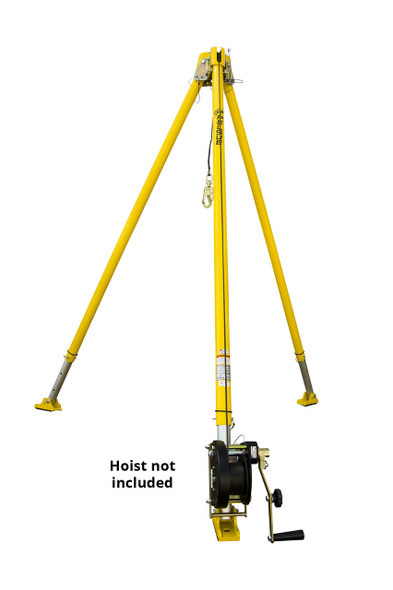

Pelsue Interlocking Series Tents
Pelsue
Interlocking Series
$924.00 - $4,100.00
RRP:
The interlocking flaps allow you to connect two tents together, or attach the tent to a work vehicle. The interlocking flaps are a great way to get extra functionality out of your tent.
Main...


Pelsue Work Series Hoists
WHO7C
$2,558.00 - $2,625.00
RRP:
The Pelsue work series hoists can be used for raising and lowering equipment only. Max load: 700 lbs. Hoists weigh 25 lbs.
About Pelsue
Pelsue is the premier manufacturer of fall arrest and...


Pelsue Standard Series Tents
Pelsue
$804.00 - $1,200.00
RRP:
The Pelsue Standard Series Tents can be deployed rapidly and are easy to transport. They are great lightweight tents where extra functionality isn’t needed. The tents incorporate a dual zipper...


Pelsue Trench Series Tents
Pelsue
$2,150.00
RRP:
The Pelsue Trench Series Tents offer protection from the elements during trenching or boring operations. One-piece construction allows for easy set-up and break-down. There are openings on both ends...


Pelsue High-Rise Series Tents
Pelsue
$1,385.00 - $2,074.00
RRP:
The Pelsue High-Rise Series Tents are ideal for use over tripod or davit rescue systems or on pole-mounted cabinets that require additional height.
Main Features
EXTRA HEIGHT


Pelsue Dual-Entry Series Tents
Pelsue
$1,282.00 - $1,723.00
RRP:
The Pelsue Dual-Entry Series improves upon the Interlocking Series by adding a rear-access door for easy entry and exit when the front of the tent is closed off. Allows greater access to work on a...


Pelsue Rescue Tripod
Pelsue
$2,450.00 - $2,860.00
RRP:
The Pelsue Rescue Tripod is designed for industrial rescue applications. The telescoping aluminum legs allows for height adjustments in 5" increments. The legs can be adjusted to any angle to meet...


Pelsue Axial Blowers
Pelsue
Pelsue Axial Blowers
$651.00 - $1,107.00
RRP:
1325P FeaturesPower: Electric - 1/3 HP, 120VAC, 3 ampsCertifications: CSA, CEESIDimensions: 18"L x 14"W x 15"HWeight: 17 lbs.Free Air (certified): 1,004 cfmWi

Pelsue Manhole Guards
Pelsue
4000-NEW
$286.00 - $865.00
RRP:
The Pelsue Manhole Guard creates a rigid and highly visible traffic barrier around open manholes. It is designed to hold up to rigorous conditions. It can be quickly set up or collapsed down, and...



